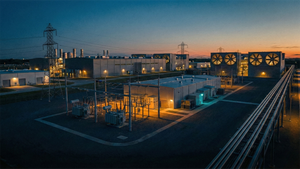The Third Exodus: Family Farms Face Another Reckoning
During the 1930s, over 750,000 family farms were abandoned. Fifty years later, a second wave of farm closures spread across the Midwest. Now, another fifty years later, the massive shuttering of family farms is about to repeat.

Champaign, United States, July 7, 2025 -- In every business sphere, disruptive innovation has left its indelible mark. Even agriculture, a sector traditionally viewed as steadfast due to its integral role in daily sustenance, has not been spared. It has experienced two significant crises in its history.
Insights On Innovation has produced a series of books and films detailing the history of farming and its growing dominance from BigAg companies. Seehttps://www.insightsoninnovation.net/farmingandfood.
In the 1920s, machinery revolutionized the farming industry. Power farming emerged, introducing motorized machines that replaced the traditional horse and oxen. Close to 100 companies sprang to life, inventing ground-breaking products including tractors, combines, harvesters, choppers, thrashers, cultivators, seeders, drills, and blowers.
Fast forward to the 1970s, and agriculture was once again disrupted, this time by the power of chemistry. Industrial farming introduced processed N-P-K fertilizers, herbicides, fungicides, and insecticides. Over a thousand different products were introduced, many being derivatives of the chemical warfare developed during the Vietnam War. These treatments were directly incorporated during the tillage, seeding, cultivation, and harvesting of crops through attachments to power farming machinery.
The 2020s are witnessing a new wave of disruption, driven by advances in biology. Plant genetics are engineered to withstand specific pesticides, enabling the crop to flourish without hindrance. A seed can be sown, a chemical treatment applied, and only that plant will thrive in that soil.
Each of these seismic shifts in technology has led to a significant overproduction. In the 1920s, grain bins were surrounded by three years' worth of wheat. In the 1970s, tank loads of milk were poured into fields. And now, in the 2020s, one-million-bushels of corn are piled near every grain elevator.
One concerning part of disruptive innovation in agriculture is that it has just the opposite impact on businesses. Whereas in a free market sector, large, entrenched companies are often replaced by smaller, more agile start-ups, in agriculture, which is heavily government subsidized, the large companies tend to thrive. In contrast, thousands of small farms are lost. In the 1930s, over 750,000 family farms were abandoned. In the 1980s, 250,000 farms went out of business. This disruption is not going to affect Wall Street, but rather decimate rural America even further.
The looming disruption serves as a stark reminder of the need to bridge the gap between technological advancement and sustainable farming practices. Innovators and policy-makers have to come together so that the pursuit of progress does not come at the expense of rural communities and small-scale farmers. For more information and how to get involved visit:https://www.insightsoninnovation.net/farmingandfood.
Contact Info:
Name: james lenz
Email: Send Email
Organization: Insights on Innovation
Address: 507 Haines Boulevard, Champaign, IL 61820, United States
Website: https://www.insightsoninnovation.net/
Source: PressCable
Release ID: 89163976
Should you come across any errors, concerns, or inconsistencies within this press release's content, we urge you to reach out without delay by contacting error@releasecontact.com (it is important to note that this email is the authorized channel for such matters, sending multiple emails to multiple addresses does not necessarily help expedite your request). Our committed team will promptly address your feedback within 8 hours and take appropriate measures to resolve any identified issues or guide you through the removal process. Providing accurate and dependable information remains our utmost priority.
More News
View More




Recent Quotes
View MoreQuotes delayed at least 20 minutes.
By accessing this page, you agree to the Privacy Policy and Terms Of Service.